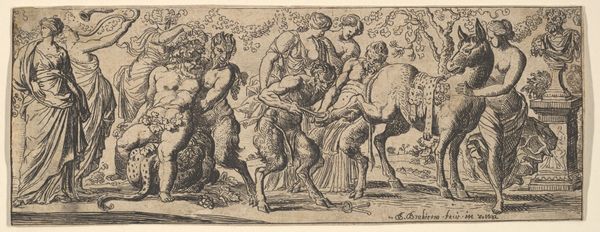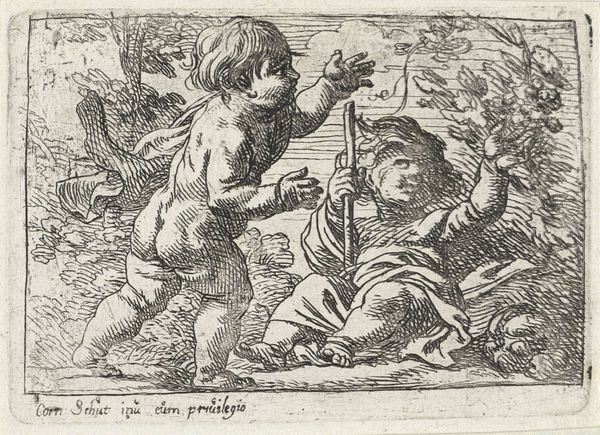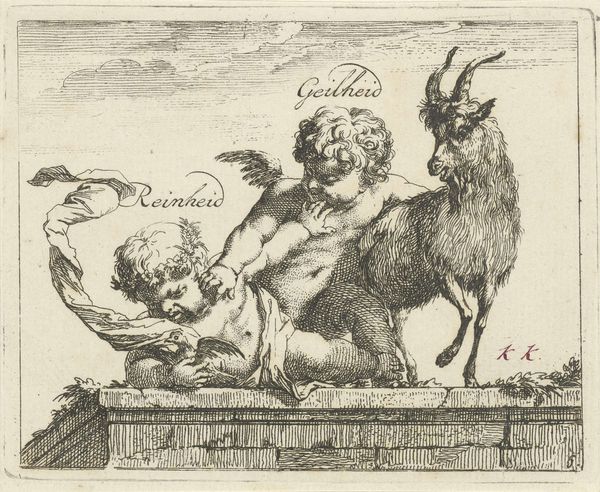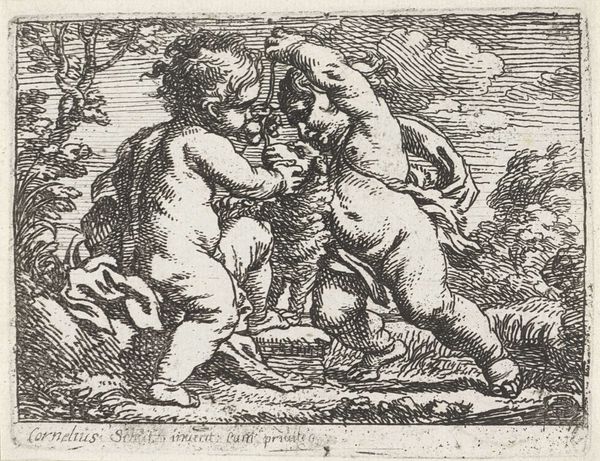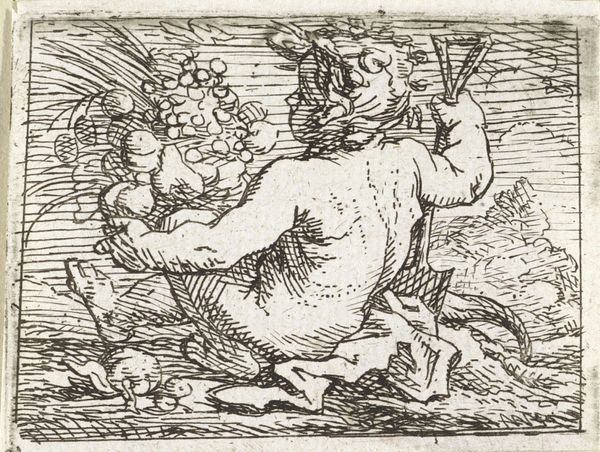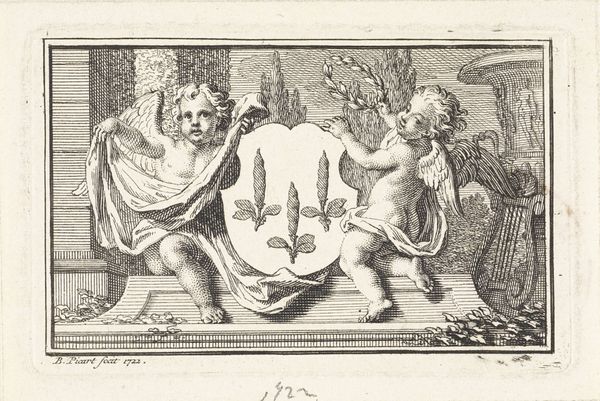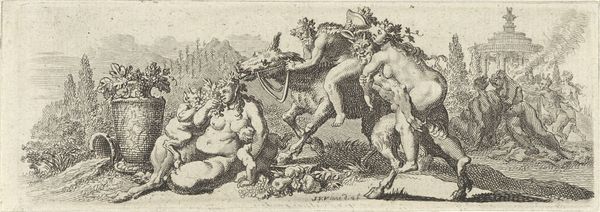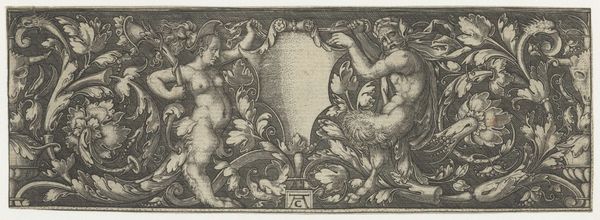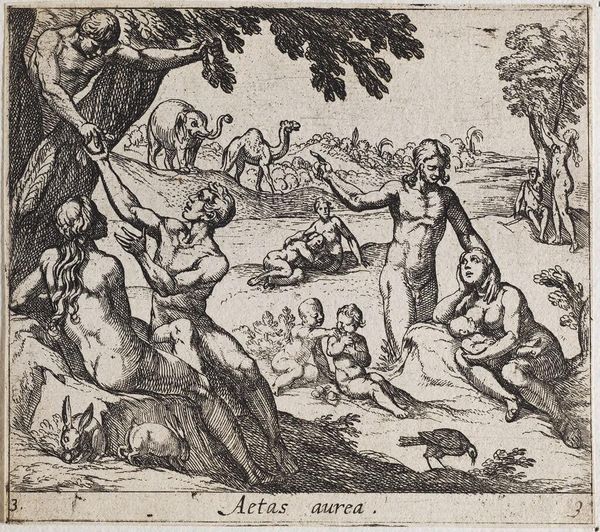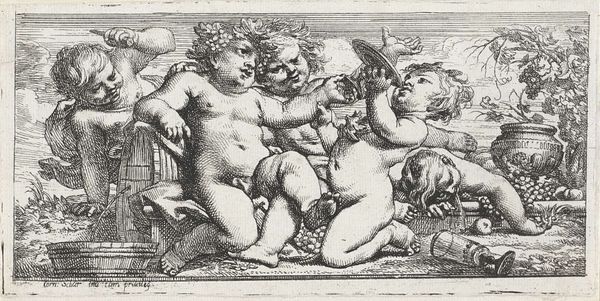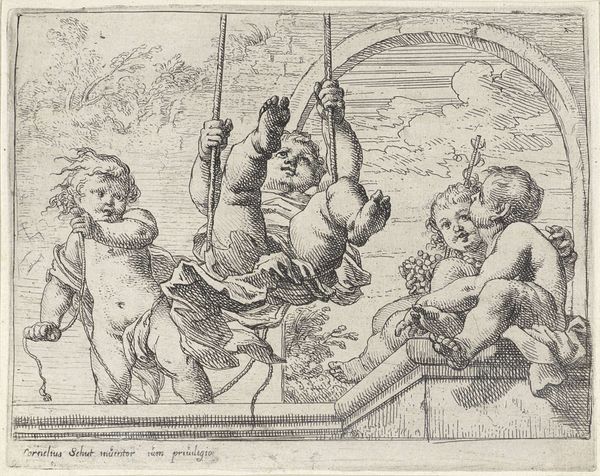
etching, intaglio
#
baroque
#
etching
#
intaglio
#
figuration
Dimensions: height 46 mm, width 76 mm
Copyright: Rijks Museum: Open Domain
Curator: This is "Christuskind en Johannes de doper," or Christ Child and John the Baptist, an etching dating back to somewhere between 1618 and 1655, attributed to Cornelis Schut. It's an intaglio print now held in the Rijksmuseum collection. Editor: Well, the first thing that jumps out is the sheer activity within this small space! Two rather stout cherubic figures wrestling—or maybe playing—with what appears to be a small ram. Curator: Indeed! The interaction is certainly dynamic. Consider the material reality of an etching like this—the copper plate itself. Schut masterfully manipulated the metal, using acid to bite into its surface, allowing for these intricate lines. It almost feels rebellious. Religious iconography presented with such earthly materiality! Editor: Earthly is right! There’s something so fundamentally physical about those chubby limbs and the ram’s wool rendered so distinctly. Do you see the scroll unfurling behind the ram’s head? The way it hovers like a celestial halo, bearing text…almost illegible, and adding a layer of whimsy. Curator: That interplay of the sacred and mundane is truly where this piece lives, isn't it? There is also a claim on the print to a degree; ‘A Schut inu cum privilegio,’ declares the text – Schut designed this with privilege. Editor: "Privilege" both social and material then. I mean, access to copper, to acid, to the skills necessary to render this… It’s all tightly woven together. Though, putting aside the access for a moment, I like how the image questions conventional representation, these are very robust angels. Curator: Precisely! The material constraints shaped his creative choices. It invites us to rethink art production and its dependence on these tangible factors, even in what may be conceived as 'higher' artistic pursuits. Editor: It does make you ponder who this work was created for. With the statement “A Schut inu cum privilegio”, its possible it wasn’t mass produced at all, so only small group were able to access its imagery. Curator: The print has indeed invited a broader consideration of religious themes with Schut's distinctive voice; one which merges playfulness with piety through accessible craft. Editor: And to be reminded how labor, intention and the inherent qualities of raw materials transform our relationship with art. It’s much deeper than what you see on the surface.
Comments
No comments
Be the first to comment and join the conversation on the ultimate creative platform.

